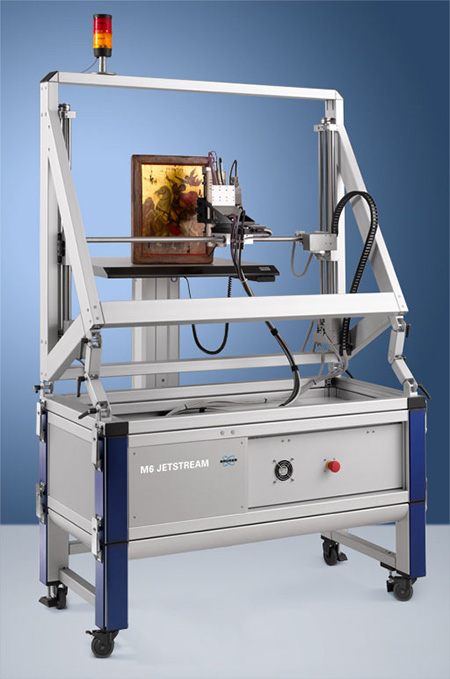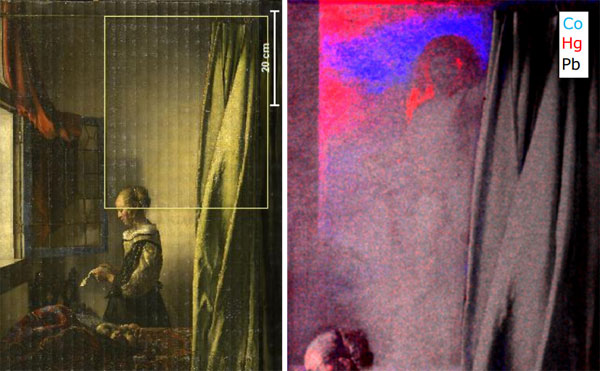Art Conservation with Micro-XRF Workshop 29/03/17
Join us on Wednesday 29th March 2017 at the National Gallery in London for a workshop about art conservation with micro-XRF.
Elemental analysis reveals hidden layers, alterations and the constituents of inorganic pigments. Micro-XRF analysis can help provide an understanding of artistic processes, for painting authentication and conservation of paintings.
Watch the videos of the talks
Micro-XRF instruments
Contact us on +44 (0)1223 422 269 or info@blue-scientific.com
Programme
Wednesday 29th March 2017
National Gallery, London (Sainsbury Wing)
- 10:00 am – Coffee and registration
- Talks from invited speakers
- Buffet lunch
- Live demonstrations
- Close around 3:00 pm
Talks
From the Lab to the Museum: Macro-XRF Scanning in Action
Dr Paola Ricciardi – Research Scientist, The Fitzwilliam Museum, Cambridge
This talk will discuss the potential and challenges of macro-XRF for scanning works of art in a museum environment, and how its use can enhance discovery, discussion and dissemination. Practical examples will be drawn from research over the past five years by the MINIARE project, led by the Department of Manuscripts and Printed Books at the Fitzwilliam Museum in Cambridge.
Dr Paola Ricciardi is a Research Scientist at the Fitzwilliam Museum in Cambridge. She is responsible for the scientific aspects of the MINIARE research project and worked alongside curator Dr Stella Panayotova on the Fitzwilliam’s recent bicentenary exhibition ‘COLOUR: the art and science of illuminated manuscripts’. Paola holds a PhD in Cultural Heritage Science from the University of Florence (2008) and a Master’s Degree in Physics from the University of Rome (2003). Before joining the Fitzwilliam Museum in October 2011, she spent three years at the National Gallery of Art in Washington DC as the Samuel H. Kress post-doctoral Fellow in Imaging Science.
Her main research interests include the technical analysis of cultural heritage objects, particularly with non-invasive analytical methods; the study of artists’ materials and techniques; and the transfer of knowledge between artists and craftsmen working in different media.
Seeing the World with Other Eyes: Micro XRF from ARTAX to M4 Tornado and M6 Jetstream
Dr. Roald Tagle – Senior Applications Scientist, Bruker Nano, Berlin
Learn about the advantages of micro-XRF and the instrumentation available. Find out about scanning large paintings, with examples, and the various parameters that can be analysed. Discover how the information revealed by micro-XRF can be used in art history research – to provide details about the artist, materials, historical information and to identify restoration and forgeries.
Dr. Roald Tagle has been Senior Applications Scientist at Bruker since 2007, working on micro-XRF applications, as well as being involved in the research and development of new technology, and training and workshops.
Live Demonstrations
See a live demonstration of micro-XRF using the Bruker M6 JETSTREAM, a non-destructive, large area scanner for analysing element distribution on paintings.
- High quality results and mapping
- Fast scanning
- Mobile rig – transport easily around your museum or gallery
- Vertical or horizontal configuration
The speakers will also be available throughout the day to answer all your questions.

Registration
The workshop is now fully booked.
Watch the videos of the talks
Micro-XRF instruments
Contact us on +44 (0)1223 422 269 or info@blue-scientific.com

Micro-XRF reveals alterations on a Vermeer painting from 1657


